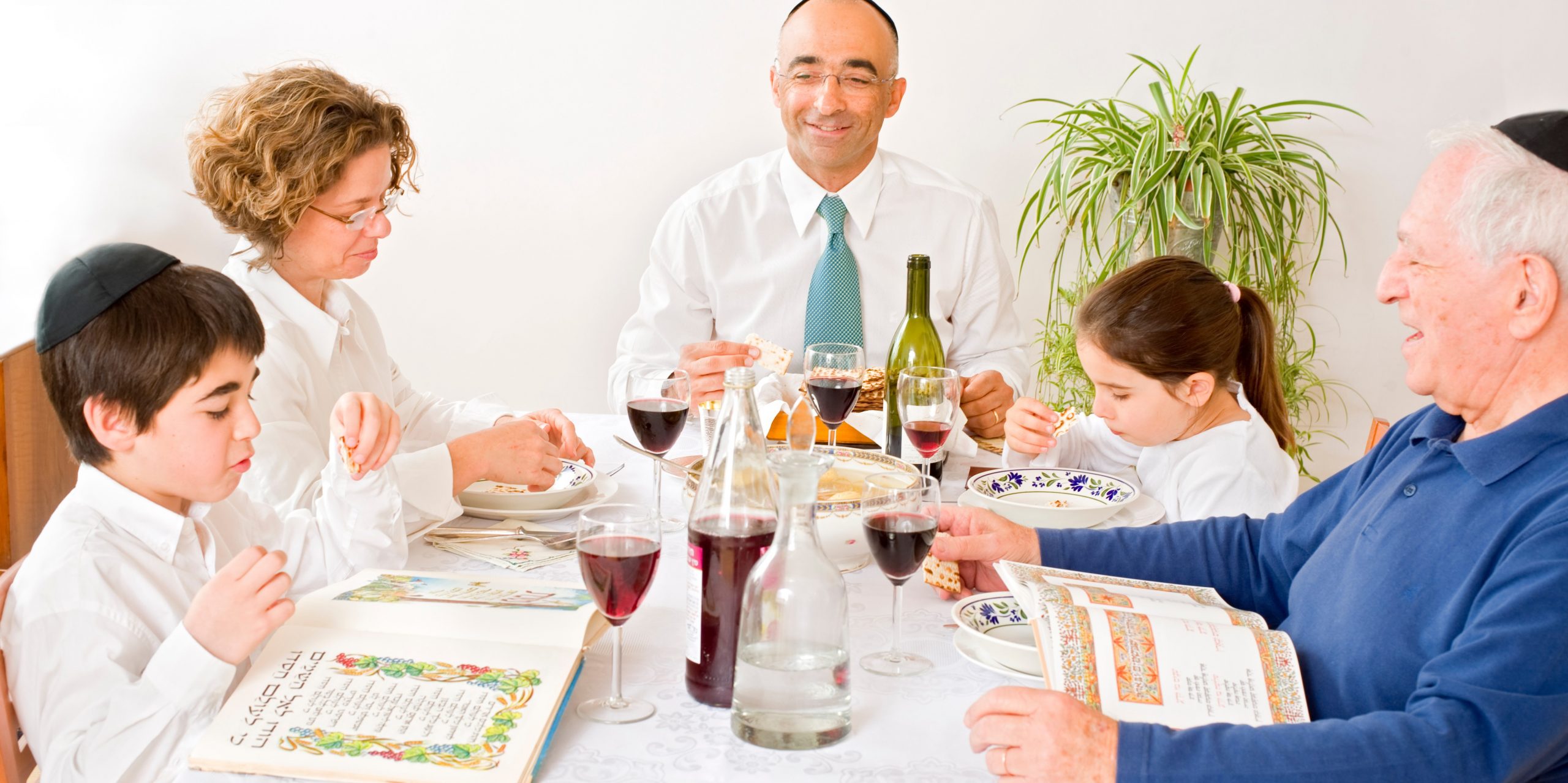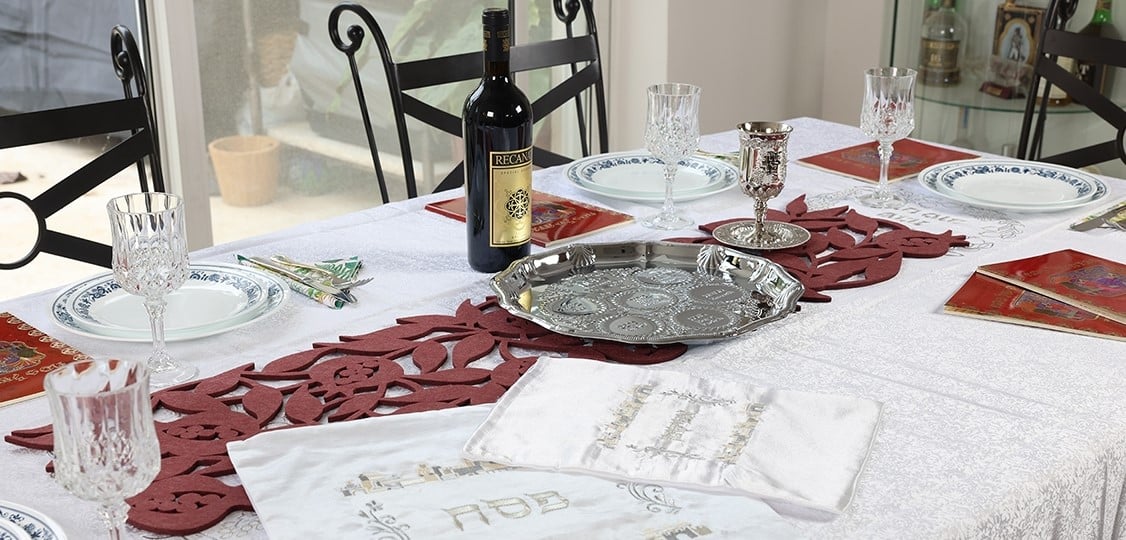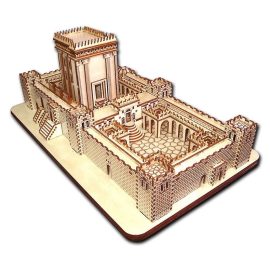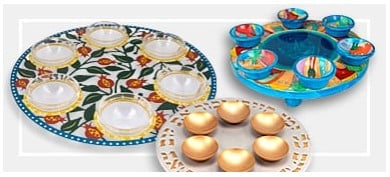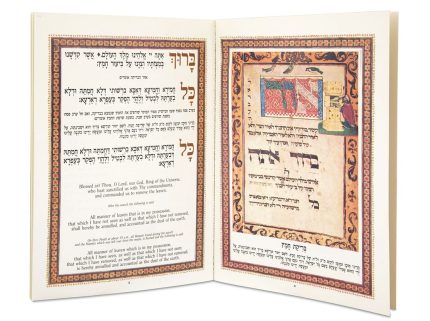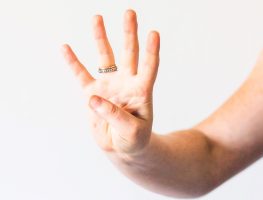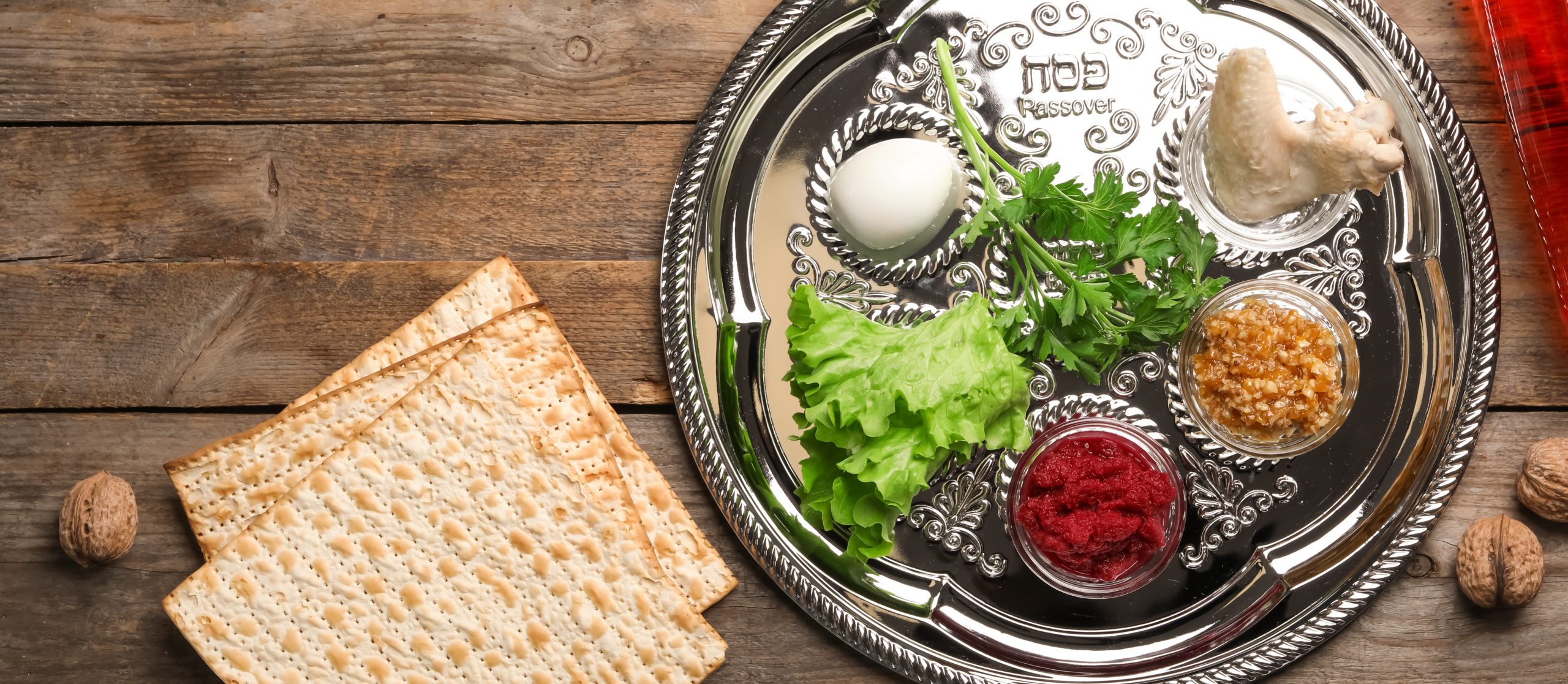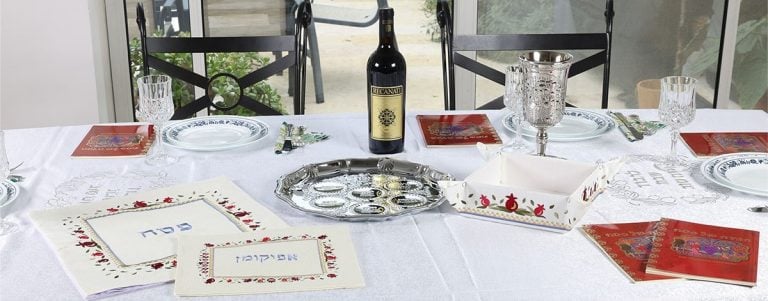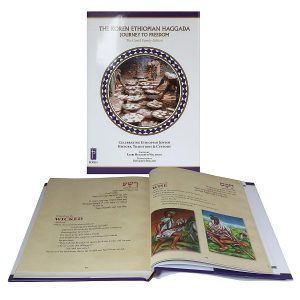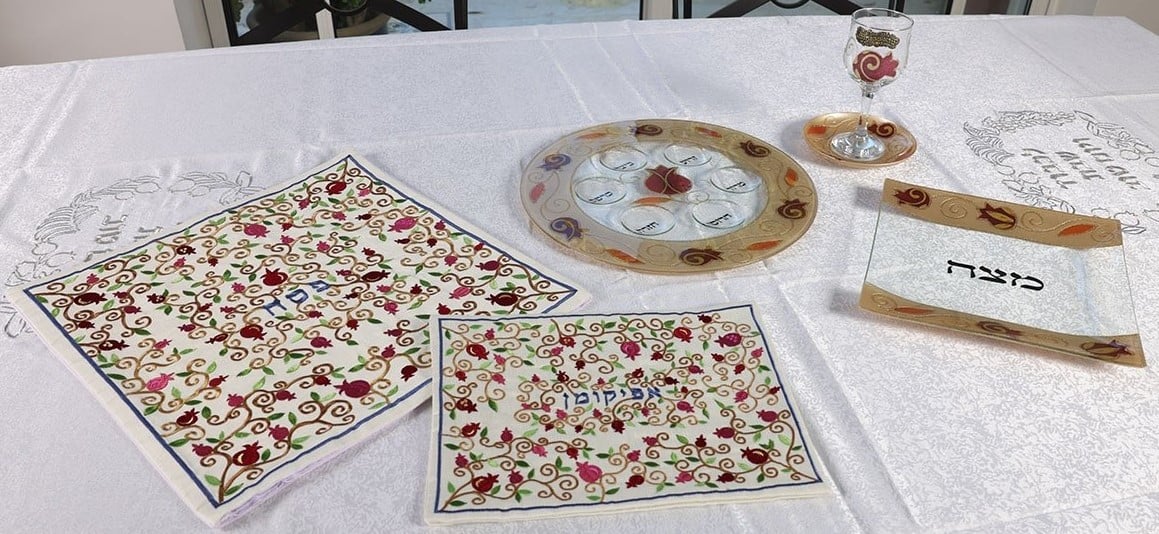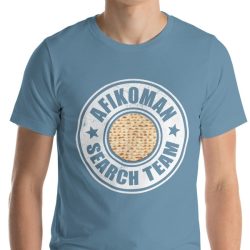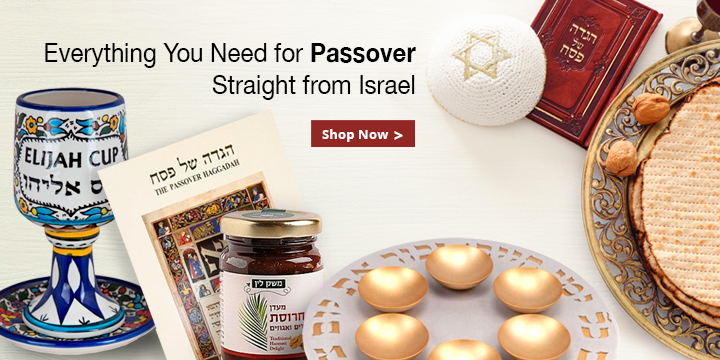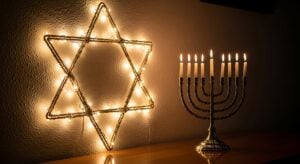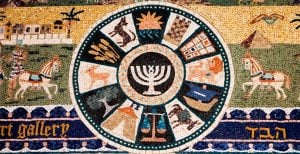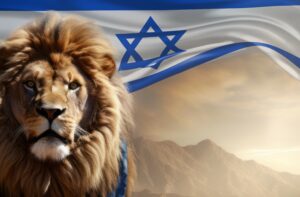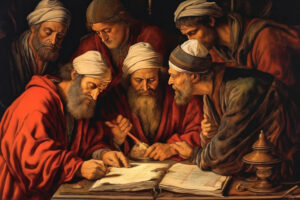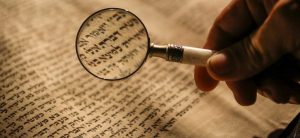The Passover Seder is the most important ritual of Passover, and one of the most famous and iconic of Jewish practices.
This rich tradition is full of surprises, with lots of fun facts you never knew! So get into the Passover holiday spirit – especially with the clock ticking down to Passover 2025 starting at sundown on Saturday, April 12th – with our 10 most surprising and interesting Seder facts:

1. The Passover ritual we call the Seder has Biblical roots, and an early version of it was already celebrated during Temple times.
The Torah commands us to tell the story of the Exodus from Egypt to our children. When the Holy Temple stood, families brought a lamb offering as a sacrifice on the eve of Passover, and then ate their slaughtered lamb together that night while retelling the Exodus story – and this ritual later developed into the Passover Seder as we know it today!
You can celebrate Passover’s rich history and Biblical origins with your very own Hebrew Bible and some amazing Temple-themed gifts from the Land of Israel from our store.

2. The Passover Seder is the most commonly celebrated of all Jewish rituals!
Secular and religious Jews alike all over the world will be sitting down with their loved ones for a Seder dinner on the night of April 22nd this year, as our people have done for centuries. For some, the Passover Seder is their main Jewish celebration of the year – so be sure to make it extra special for your guests with our fabulous Passover gifts and essentials straight from Israel!

3. The Hebrew word “Seder” means order or arrangement – referring to the ordered nature of the different ritual portions of the meal.

4. The number 4 features prominently throughout the Passover Seder.
Between the four cups of wine, four sons, four different blessings, and four questions, the number 4 is a recurring theme of the Passover Seder.
Make sure you’re ready for the different parts of the holiday with our best Israeli-made Passover essentials!

5. The “Hillel sandwich” that we eat at the Seder was originally more like a burrito or wrap.
During times of the Bible and the Temple, matzah was a soft flatbread (and this version is still eaten in some Jewish communities today, such as those hailing from Yemen). The Hillel sandwich, named for the 1st century CE sage Rabbi Hillel, took the soft matzah and wrapped it around a piece of the Passover lamb together with bitter herbs.
Most matzah today resembles a hard cracker, and instead of the lamb our Hillel sandwich combines the bitter herbs with charoset.
No matter what your matzah and your Hillel sandwich looks like today, you’ll love beautifying your holiday with our gorgeous Israeli-made Seder essentials such as Seder plates, matzah holders, and matching Passover tableware sets.

6. Not everyone uses a shank bone on their Seder plate.
Since the Temple has been destroyed we no longer have the Passover lamb sacrifice, but instead put a reminder of it on our Seder plates – and the most common option is a shank bone from a lamb. However, some very religious Jews consider the shank bone to be too reminiscent of the Temple sacrifice, and instead have a custom of using a roasted piece of chicken, often a wing.
Meanwhile, many vegetarians and vegans prefer a roasted beet, which is even referenced as a Passover Seder option in the Talmud. (To learn more about this and other vegan-friendly customs, see our Vegan Seder Plate post here.)
Whatever you choose to place on your Passover Seder plate, find your perfect one with our guide here or browse our entire collection of artistic and traditional Seder plates from Israel here.

7. The Passover Seder is specifically formulated to engage all ages and get children to ask questions!
Certain portions of the Seder are unusual, quirky, or might not make a lot of sense until explained, and the Sages of the Talmud tell us this is specifically “so that the children will ask.”
More than just a straight telling of the story, Judaism sees it as a value to make things interesting and inspire questions. So get your whole family engaged in the Passover Seder with a beautifully illustrated haggadah and fun Passover gifts!

8. There are special requirements for the matzah used at the Seder, and not all matzah is considered suitable.
Make sure your commercially-bought matzah is labeled Kosher for Passover, as not all matzah meets the requirements of unleavened bread according to Jewish law!
Moreover, traditionally, matzah used at the Passover Seder itself has some additional requirements. While many Jews today consider regular Passover matzah to be fine for the Seder as well, the more traditionally observant purchase specially handmade “shmurah matzah” just for the Seder – matzah that was made specifically with the intention of fulfilling the Passover Seder commandments and which was guarded by an observant Jew during the entire production process.
Whatever your family’s matzah tradition, get ready for the Seder with matzah must-haves from Israel, such as a beautiful matzah plate and decorated cover!

9. Unlike on other holidays or shabbat, everyone at the table (above bar/bat mitzvah age) is commanded to drink wine or grape juice.
Regular shabbats and other major holidays have a tradition of kiddush prayers accompanied by wine or grape juice just like Passover does, but only the leader is required to drink it (while the other guests may partake but don’t have to).
On Passover however, everyone must drink from the wine or grape juice, and not just during kiddush but for a total of four times during the Passover Seder.
Learn more about this custom with our Passover Kiddush Cup and Four Cups of Passover blog posts, and order delicious kosher-for-Passover grape juice from Israel – just make sure to have enough for four cups for all your guests!

10. There is a tradition of giving or promising gifts to the children in the family at the Passover Seder!
When the children search for and find the afikoman towards the end of the Passover Seder, in some families the finder holds the afikoman for “ransom” and gives it back in exchange for a gift or the promise of one to be given at a later date.
Therefore, many parents prepare for this tradition ahead of time with a special “afikoman gift” for the kids.
Read more about the tradition of hiding the afikoman here, and brighten up your young loved ones’ Passover with our stunning Israeli-made gifts for kids and top afikoman gift ideas!

Get everything you need for a meaningful and enjoyable holiday with our Passover Judaica and gifts straight from the Land of Israel!
And check out the top Passover 2025 gifts and our Seder essentials guide for the best items that’ll wow your family and guests.
Make your loved ones’ holiday amazing with our guide to the best Passover gifts from Israel’s top artists!

